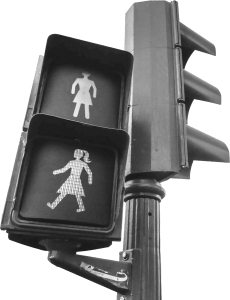How definitions drive debates: From affirmative action to quotas
by Laura M. Browning
Women around the world already know that gender inequality pervades almost every aspect of life. Men, particularly white men, have traditionally held power and privilege in our societies. But how should we close that gap? Because this debate isn’t really about whether there should be gender equality, we’ve added a question to frame a possible solution: “Gender Equality: Are Quotas the Answer?” As our debators take the stage on March 9, 2020, to discuss solutions, here are some definitions to help guide you through their positions.
When we talk about quotas, we’re referring to parts in relation to a whole. The word itself dates to the early 1600s, though it wasn’t until the late 19th century that it began appearing in the sense we mean in this debate: a fixed number or percentage of a certain group of people belonging to a larger group, such as schools, governments, or clubs. By the early 20th century, the U.S. was using quotas in its legislation. The Emergency Quota Act of 1921 set immigration quotas for the first time in U.S. history, with new immigration restricted to 3 percent of the number of each nationality already living in the United States. It was used not only to set limits on immigration, but to restrict certain nationalities from immigrating to the U.S.
The history of quotas isn’t entirely racist, and in recent decades, quotas have been used in an effort to close gender gaps in politics and board rooms. In 1991, Argentina passed the world’s first gender quota law, mandating that political parties nominate women for 30 percent of the electable positions on their candidate lists. The Ley de Cupos (Quota Law) was introduced by female senators and bolstered by political and social support under the slogan, “With few women in politics, women change; with many women in politics, politics changes.” Today, nearly all Latin American countries have some form of a quota law to increase representation of women in national politics. In Costa Rica, the constitutional court ruled that gender quotas sought both equal opportunity and equal outcome — something we’ll be hearing about during this debate — prioritizing the need to elect, not just nominate, female candidates.
In Rwanda, the 2003 constitution set a 30 percent quota for women in all elected positions, and political parties set voluntary quotas for their own candidate lists. Today, women make up 63 percent of the national parliament, the highest in the world. The United States, which does not have any quota laws for political participation, ranks 75 on this list.
Jerry Brown, then governor of California, signed into law an unprecedented measure in 2018: By the end of 2019, publicly traded companies headquartered in California were required to have at least one woman on their board of directors, and two by 2021. (The law has faced several legal challenges.) To date, no other state in the U.S. has adopted such a law.
“Some of this may sound similar to affirmative action, which seeks to address discrimination by ensuring equal treatment of people applying to jobs or schools.”
The term was codified in the United States with a 1961 executive order that President John F. Kennedy signed to mandate that federal contractors take “affirmative action to ensure that applicants are treated equally without regard to race, color, religion, sex, or national origin.” Affirmative action in the U.S. was a polarizing issue almost from its inception. In 1969, the Nixon Administration wrote, “the concepts of quotas and preferential treatment based on race, color, national origin, religion and sex are contrary to the principles of our laws.” Proponents of affirmative action see it as a necessary means to correct past and prevent future discrimination. Affirmative action policies are used around the world, sometimes under the names positive discrimination or reservation (i.e., reserving a certain number of political seats for a certain category of people).
There’s an important characteristic missing from Kennedy’s executive order: gender. (It was amended six years later to include women.) Though gender and sex have historically been conflated, they are not the same thing. Sex, assigned at birth based on physical attributes, typically only accounts for “male” and “female.” (Some may be assigned “intersex” at or after birth, which describes individuals that don’t fit definitions of male or female anatomy.) Gender is an expansive term that accounts for all forms of gender expression and identification, both inside and outside of the male-female binary.
So although we typically use “gender equality” to mean “equality between men and women,” a more inclusive way of looking at it is “equality among all genders.” That said, the data and statistics on these issues use binary definitions, and therefore so does the language we use to debate them.
Both proponents and opponents of gender quotas talk about what it means — and whether it’s necessary — for those quotas to be intersectional, rather than just setting mandates for the number of women to be included. Intersectionality takes into account the multitudes of human experience and identification. The theory of intersectionality was developed in 1989 by Kimberlé Crenshaw, a scholar of critical race theory and a law professor now teaching at Columbia Law School and the UCLA School of Law. Her framework lays out a multidimensionality that simply wasn’t understood by U.S. discrimination laws — Crenshaw told Vox in 2019, “In particular, courts seem to think that race discrimination was what happened to all black people across gender and sex discrimination was what happened to all women, and if that is your framework, of course, what happens to black women and other women of color is going to be difficult to see.”
Watch the full debate
Gender Equality

